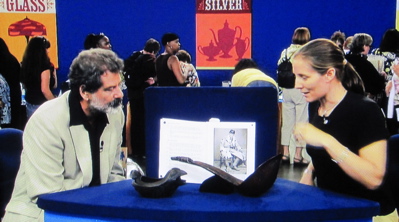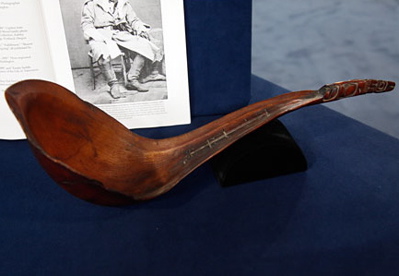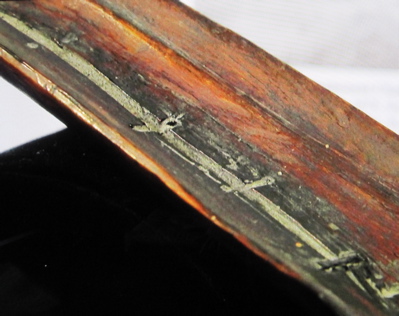I’ve been watching the Antiques Roadshow since it first aired in 1997, hoping to spot anything with an inventive repair. I finally got my wish in May 2010 with a Native American Tlingit ladle made of mountain sheep horn, c.1800.
The ladle was appraised for $75,000 in 2010 and I imagine it has appreciated in value over the past 9 years.
APRAISER: These would have been considered family heirlooms of the Tlingit people. That’s obviously not the shape of an original horn.
GUEST: Yeah, I wondered, is it carved out?
APPRAISER: Boiled until the horn fabric is soft and malleable, and then pressed into a mold, tied down and left to dry, and then it retains that shape. Right in the middle, there are little cracks and what we might call staples.
GUEST: Uh-huh.
APPRAISER: Although the material is not metallic, it’s baleen, from a whale’s mouth.
GUEST: Wow.
APPRAISER: So where it began to split, we see a Native repair.
GUEST: That’s cool.
Images courtesy of Antiques Roadshow
Tags: staples/rivets



I wonder if Eames knew about this when he began using pressed plywood in his early work in the army with shaped stretchers and then with the lounge chair, etc.?
I wouldn’t be surprised if he stumbled upon this process used in a piece such as this in a museum.